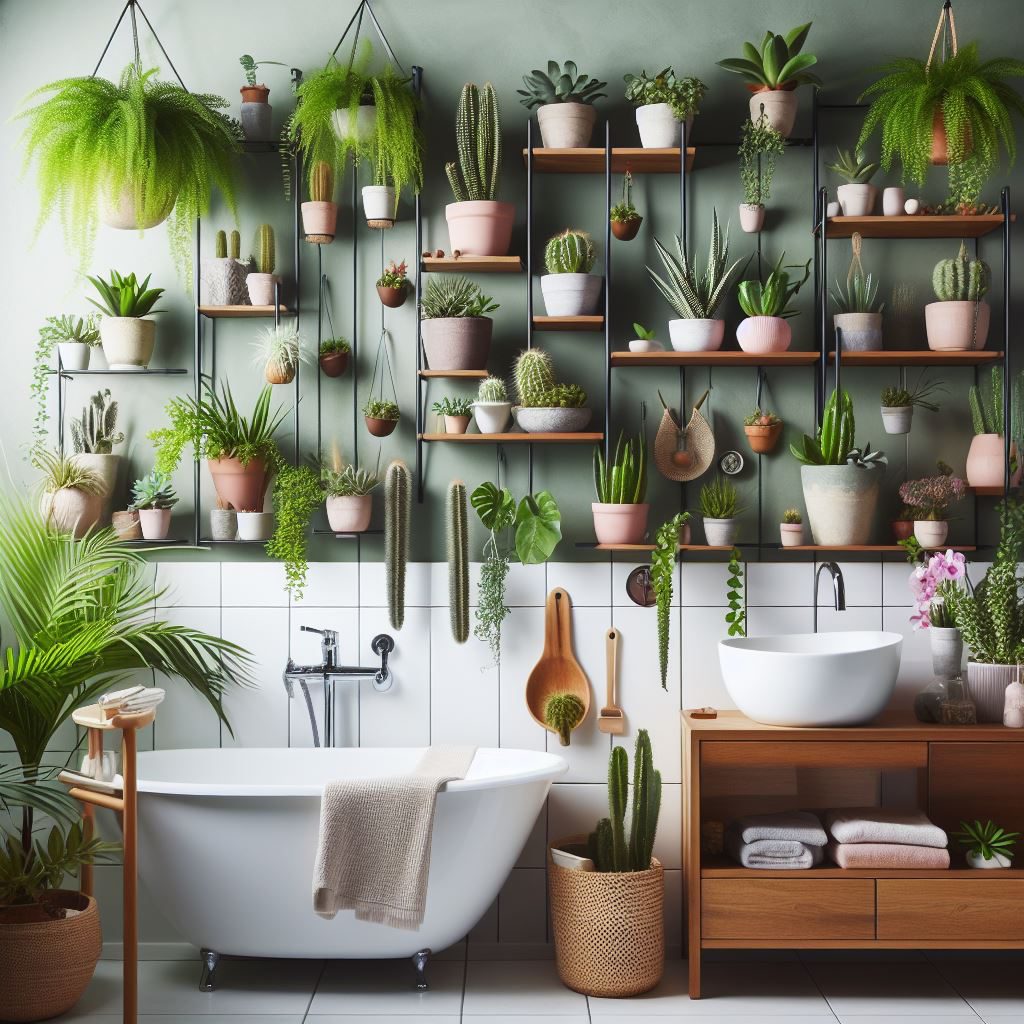
Bathrooms often get neglected when it comes to greenery, but they hold surprising potential to become vibrant sanctuaries. Bathroom plants offer more than just aesthetics; they purify the air, boost your mood, and increase humidity, creating a spa-like retreat right in your home. But choosing the right plants for this unique environment can be tricky. Don’t worry, we’ve got you covered!
This guide explores 32 amazing plants that thrive in bathrooms, along with their care tips, so you can transform your space into a flourishing oasis. Let’s bring the outdoors in and unlock the benefits of bathroom plants today!
Bathrooms often get overlooked when decorating, but they hold untapped potential to become little green sanctuaries. Houseplants not only add a touch of life and beauty to your bathroom, but they also offer surprising benefits:
- Increased humidity: Bathrooms tend to be dry, and plants help combat that by releasing moisture into the air, creating a spa-like atmosphere and improving your respiratory health.
- Improved air quality: Plants act as natural air purifiers, absorbing toxins and pollutants commonly found in bathrooms.
- Enhanced mood: Studies show that greenery can reduce stress and boost your mood, making your bathroom a more relaxing retreat.
- Aesthetic appeal: Lush foliage and vibrant blooms instantly elevate the bathroom’s ambiance, transforming it into a serene oasis.
But choosing the right plants for your bathroom can be tricky, given the unique environment with limited light, high humidity, and temperature fluctuations. Don’t worry, we’ve got you covered! Here are 32 amazing plants that will thrive in your bathroom, along with their care tips:
Low-Maintenance Bathroom Plants Beauties
- Asparagus Fern: Delicate foliage thrives in bright, indirect light and moist soil. Caution: Thorny and toxic, keep away from children and pets.
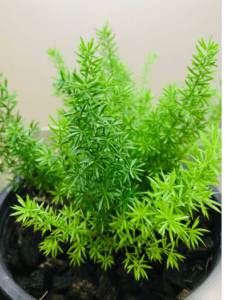
- Bamboo: Lush greenery prefers bright, indirect light and moist, well-draining soil. Remember, it can be invasive outdoors, so keep it containerized.
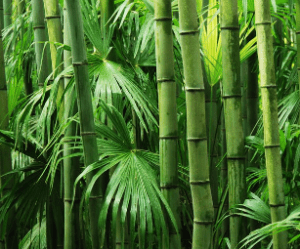
- Begonia: Available in stunning varieties with flowers or foliage, they need bright, indirect light and consistently moist (not soggy) soil.
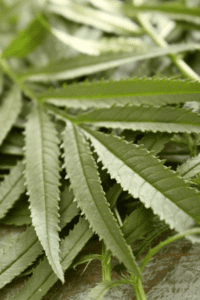
- Bromeliad: Show-stopping blooms emerge in winter. Some are epiphytic, needing no soil, while others prefer well-draining soil and good air circulation. Feed with orchid fertilizer.

- Cast-Iron Plant: Nearly indestructible, tolerates low light and temperature swings. It rarely flowers indoors and is toxic to pets.
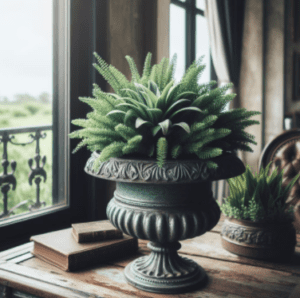
- Chinese Evergreen: Glossy green or variegated leaves add vibrancy. Adaptable and forgiving, it dislikes cold drafts and sudden heat changes.
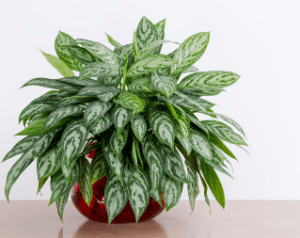
- Croton: Dazzling foliage in various patterns needs high humidity and consistent moisture (not wet soil). Be mindful that it’s toxic to pets.
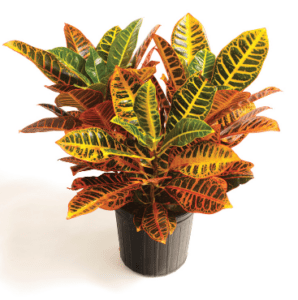
- Dieffenbachia: Large, variegated leaves make a statement. Low maintenance, but needs more light in winter and less in summer. Warning: Highly toxic to humans and pets.
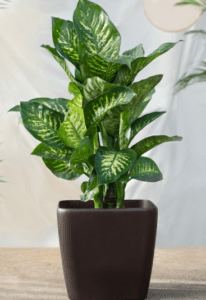
Fern Frenzy
- Ferns come in diverse varieties, some even thriving in the shower! Popular choices include:
- Boston Fern: Lush fronds demand humidity and bright, indirect light.
- Maidenhair Fern: Delicate foliage prefers constant moisture and bright, indirect light.
- Bird’s Nest Fern: Unique rosette shape enjoys humidity and medium light.
- Button Fern: Adorable button-shaped fronds need humidity and bright, indirect light.
Blooming Beauties
- Gardenia: Fragrant white flowers and glossy green leaves add elegance. Requires bright light, high humidity, and acidic soil. Regular pruning and feeding are key.
- Orchids: Hundreds of species, many ideal for bathrooms. Some need soil, while others are epiphytic. Enjoy weeks of blooms in various colors.
- Peace Lily: Glossy green leaves and white flowers thrive with regular watering and high humidity. Tolerates low light but won’t flower. Toxic to pets.
Vine Vitality
- Philodendron: Diverse options with vines or upright stems. Easy care, preferring bright, indirect light and moist soil. Toxic to pets.
- Pothos: Similar to philodendron but with smaller, heart-shaped leaves. Nearly indestructible, tolerating low or bright light. Regular watering and pruning are recommended. Toxic to pets.
- Spider Plant: Fun, easygoing plant with long, striped leaves and baby plantlets. Enjoys tight containers, moist soil, bright indirect light, and cool temperatures. Safe for pets.
Other Delights
- Snake Plant: Upright, sword-shaped leaves with various patterns. Drought-tolerant and handles low or bright light. Needs well-draining soil and occasional feeding. Toxic to pets.
- Weeping Fig: Small tree with glossy green leaves. Avoid temperature changes and cold drafts. Prefers well-draining soil and moderate watering. Needs bright light and some direct sunlight indoors. Toxic to pets.
- Dragon Tree: Long, slender stems with tufts of leaves. Thrives in high humidity and bright, indirect light. Rich, slightly acidic, well-draining soil is ideal. Toxic to pets.
- Anthurium: Waxy, heart-shaped flowers in vibrant colors love humidity and bright, indirect light. Coarse, well-draining potting mix is key.
Palm Power
- Majesty Palm: Graceful palm reaching up to 12 feet indoors. Enjoys indirect light and high humidity. Needs sandy, loamy soil with good drainage. Regular feeding and pruning are recommended. Safe for pets.
- Parlor Palm: Compact palm growing up to 4 feet indoors. Prefers indirect light and moderate humidity. Thrives in acidic, well-draining potting mix. Occasional feeding and pruning are beneficial. Safe for pets.
Trailing Beauties
- Algerian Ivy: Trailing vine with waxy, variegated leaves. Can be a ground cover or houseplant. Enjoys bright, indirect light and high humidity. Well-draining, neutral to slightly acidic potting mix is ideal. Toxic to pets.
- Spiderwort: Trailing plant with striped or variegated leaves. Can be a ground cover or houseplant. Prefers bright, indirect light and high humidity. Needs well-draining potting mix. Safe for pets.
- Kentia Palm: Large palm reaching up to 10 feet indoors. Enjoys bright, indirect light and high humidity. Needs sandy, loamy soil with good drainage. Occasional feeding and pruning are recommended. Safe for pets.
Unique Touches
-
Jade Plant
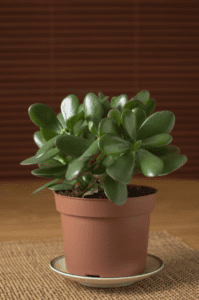
Succulent with thick, fleshy leaves. They can live for years and grow up to 6 feet indoors. Prefers bright, indirect light and low humidity. It needs well-draining potting soil for succulents. Infrequent watering and feeding are sufficient. Toxic to pets.
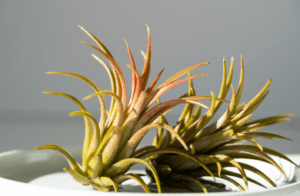
Epiphytes need no soil! Please place them in pots, plates, holders, or windowsills. Available in diverse shapes, sizes, and colors. Enjoy bright, indirect light and high humidity. Require regular misting and soaking. Safe for pets.
-
String of Pearls
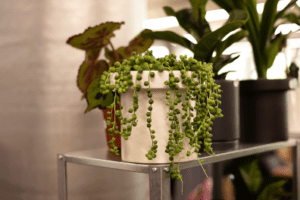
Trailing succulent with tiny, bead-like leaves. Perfect for hanging in the bathroom. Prefers bright, indirect light and low humidity. It needs well-draining potting soil for succulents. Infrequent watering and feeding are sufficient. Toxic to pets.
-
Purple Shamrock

Dark purple leaves with magenta markings. It can be grown indoors or outdoors. Enjoys bright, indirect light and moderate humidity. Needs a well-draining, slightly acidic potting mix. Regular watering and feeding are required. Toxic to pets.
-
Staghorn Fern
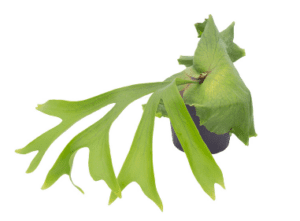
Unique antler-like fronds. Mount on moss boards or plaques and keep moist, but avoid soaking. Prefers bright, indirect light and good air circulation.
Thriving with Style: Beautifying Your Bathroom Oasis
Now that you’ve chosen your perfect bathroom companions let’s explore how to style them to make the most impact!
- Play with Texture and Height: Combine plants with different leaf shapes and sizes for visual interest. Use hanging planters or shelves to create a layered effect.
- Embrace Natural Materials: Woven baskets, wooden stools, and seashells add a spa-like feel and complement the botanical theme.
- Light Matters: Position your plants strategically to maximize their access to the available light.
Troubleshooting Common Bathroom Plant Issues
Even the most resilient bathroom plants can face challenges. Here’s how to identify and address some common problems:
- Leggy Growth: This is caused by insufficient light. Give your plant a brighter spot, or consider rotating it regularly.
- Brown Leaves: The culprit could be underwatering, overwatering, or low humidity. Check the soil moisture and adjust your watering routine. Grouping plants can help raise humidity naturally.
- Yellowing Leaves: This often indicates overwatering. Allow the top inch of soil to dry before watering again.
Remember, a little observation goes a long way. You can quickly diagnose and address any issues by understanding your plants’ needs and their bathroom environment.
Remember
- Light: Most bathroom plants prefer bright, indirect light. Avoid direct sunlight, which can scorch leaves.
- Humidity: Bathrooms provide naturally high humidity, but some plants, like ferns and air plants, may benefit from extra misting.
- Watering: Don’t overwater! Most bathroom plants prefer moist soil, not soggy soil. Let the top inch of soil dry before watering again.
- Toxicity: Be aware of toxic plants, especially if you have pets or small children.
Conclusion
So, you’ve embarked on your journey to create a vibrant bathroom haven with the magic of plants! Remember, while some bathroom plants, like the bright and air-purifying spider plant or the low-maintenance jade plant with its green leaves, can tolerate lower light, many still crave indirect light. Avoid direct sunlight that can scorch delicate foliage.
Explore the diverse options – from the feathery asparagus fern to the unique air plant – to find the perfect fit for your specific light levels and humidity. Boston ferns, for instance, love the humidity of bathrooms, while snake plants are drought-tolerant champions. Don’t forget to factor in your personal style!
So, let your creativity blossom, embrace the benefits of bright indirect light, and watch your bathroom transform into a thriving sanctuary filled with the beauty and serenity of nature’s touch. Remember, happy plants, happy you!





























